
Cabinet-on-stand, London, ca. 1700. Cabinet, oak and pine; stand, pine and basswood. H. 35 7/8", W. 38", D. 19 3/4". (Courtesy, V&A Images, Victoria & Albert Museum.)
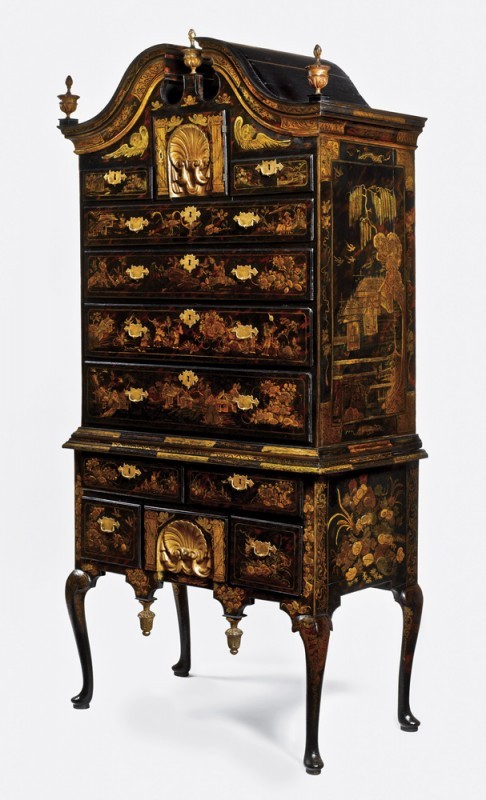
High chest of drawers, Boston, Massachusetts, 1730–1740. Maple, white pine, and birch with white pine. H. 86 1/2", W. 38 1/4", D. 20 7/8". (Courtesy, Metropolitan Museum of Art, purchase, Joseph Pulitzer Bequest, 1940 [40.37.1]; photo, Gavin Ashworth.)
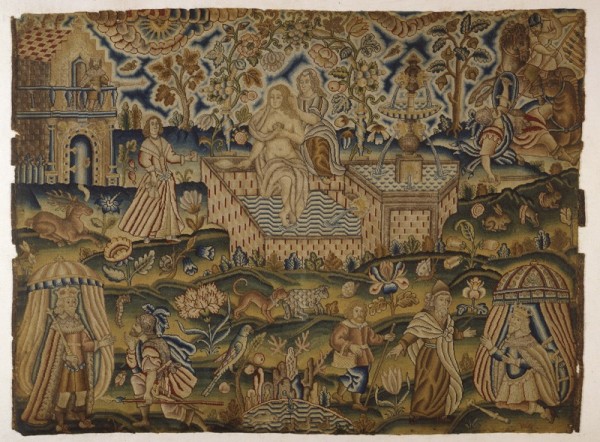
Needlework picture depicting David and Bathsheba, England, late seventeenth century. 14 5/8" x 19". (Courtesy, Ashmolean Museum, Oxford.)

Detail of the lower drawer of the upper case of the high chest illustrated in fig. 2. (Photo, Gavin Ashworth.)
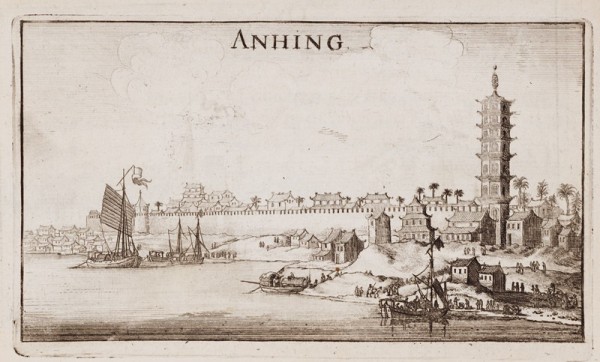
View of “ANHING” from Johan Nieuhof, Embassy from the East India Company, of the United Provinces, to the Grand Tartar Cham, Emperor of China, . . . . (London, 1673). (Courtesy, Beinecke Rare Book and Manuscript Library, Yale University.)

Detail of the drawer directly above the one illustrated in fig. 4. (Photo, Gavin Ashworth.)

“CHINESE MEN” from Johan Nieuhof, Embassy from the East-India Company, of the United Provinces, to the Grand Tartar Cham, Emperor of China, . . . . (London, 1673). (Courtesy, Beinecke Rare Book and Manuscript Library, Yale University.)
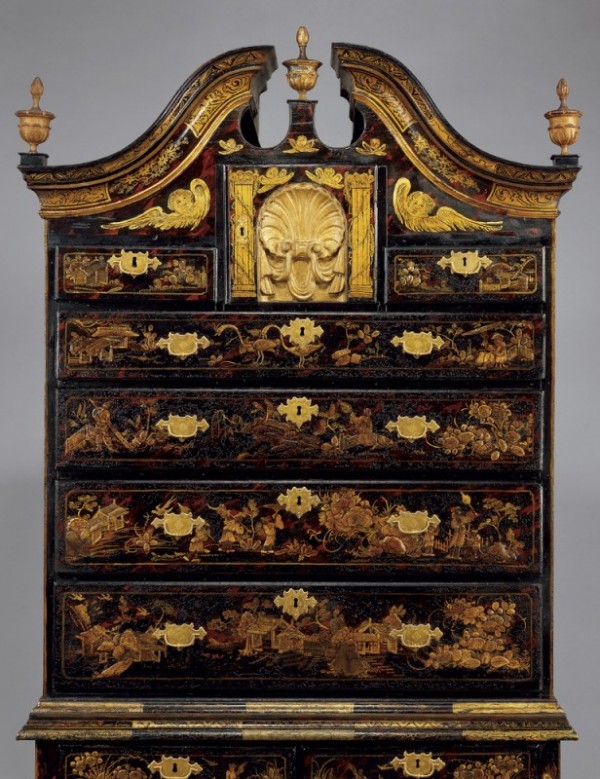
Detail of the upper section of the high chest illustrated in fig. 2.
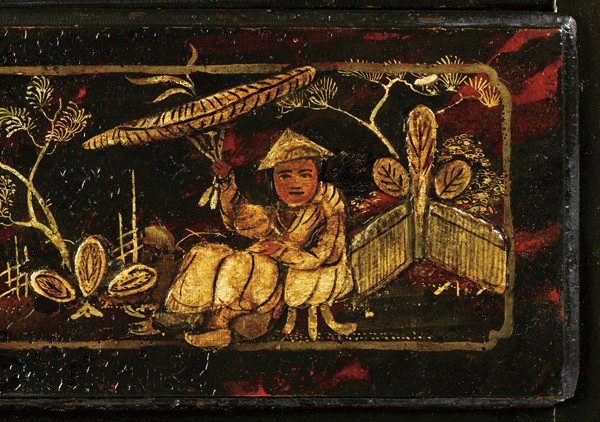
Detail of the decoration on the right side of the large drawer at the top of the upper section of the high chest illustrated in fig. 2. (Photo, Gavin Ashworth.)

Detail showing how the decoration continues from the right edges of the drawers on the right side of the upper section of the chest illustrated in fig. 2 to the left side of the drawers below. (Photo, Gavin Ashworth.) (A) On the right edge of the small drawer at the top of the upper case, a tree limb arcing up behind a small house intersects the drawer edge and disappears. But its missing portion, which matches the other half of the tree perfectly, reappears on the left-hand side of the large drawer below.

Detail showing how the decoration continues from the right edges of the drawers on the right side of the upper section of the chest illustrated in fig. 2 to the left side of the drawers below. (Photo, Gavin Ashworth.) (B) The bridge that appears on the right edge of the upper large drawer is repeated on the left side of the drawer below.

Detail showing how the decoration continues from the right edges of the drawers on the right side of the upper section of the chest illustrated in fig. 2 to the left side of the drawers below. (Photo, Gavin Ashworth.) (C) The flowers on the right side of the second large drawer from the top continue as foliage behind the house on the left-hand side of the drawer below.
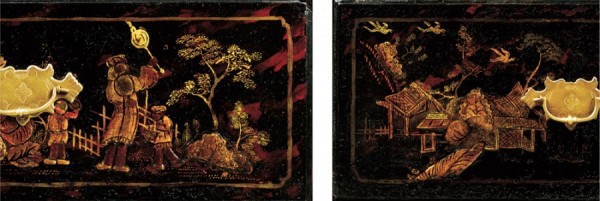
Detail showing how the decoration continues from the right edges of the drawers on the right side of the upper section of the chest illustrated in fig. 2 to the left side of the drawers below. (Photo, Gavin Ashworth.) (D) The fences and trees on the right side of the third drawer down reappear behind the houses on the left side of the bottom drawer.
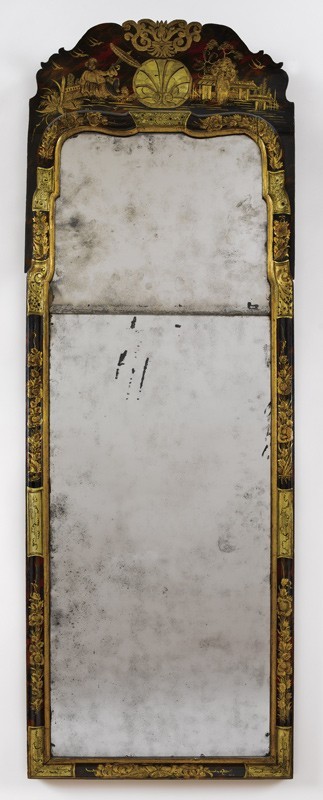
Looking glass, Boston, Massachusetts, 1730–1740. White pine. H. 57 1/2", W. 19 1/8", D. 1 1/4". (Courtesy, Metropolitan Museum of Art, purchase, Joseph Pulitzer Bequest, 1940 [40.37.4]; photo, Gavin Ashworth.)
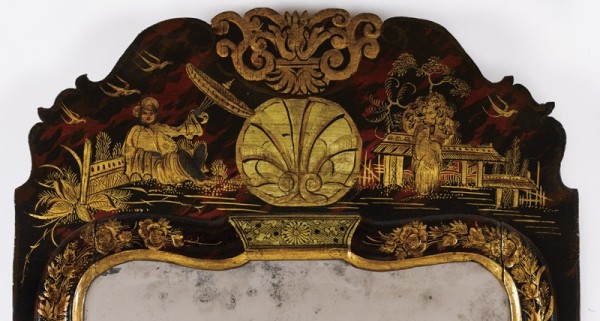
Detail of the crest of the looking glass illustrated in fig. 11. (Photo, Gavin Ashworth.)
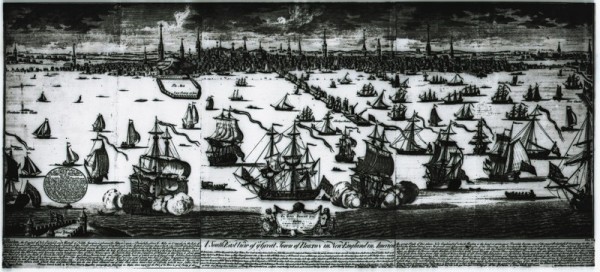
William Burgis, South East View of the Great Town of Boston, Boston, Massachusetts, 1743. 9 7/8"x 20 7/8". (Courtesy, American Antiquarian Society.)

High chest of drawers, Boston, Massachusetts, 1730–1740. White pine and maple with white pine. H. 95 3/4", W. 42", D. 24 1/2". (Courtesy, Winterthur Museum.)

Detail of the decoration on a drawer from the upper case of the high chest illustrated in fig. 14.
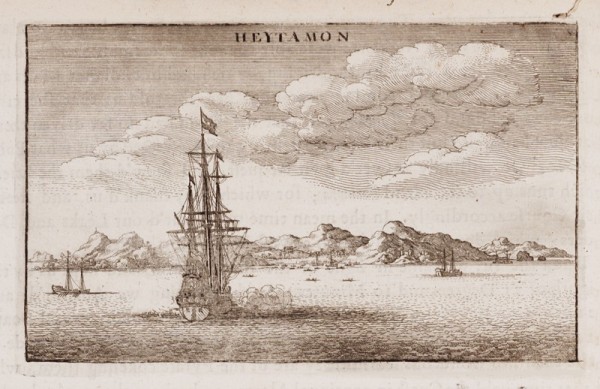
View of “HEYTAMON” from Johan Nieuhof, Embassy from the East-India Company, of the United Provinces, to the Grand Tartar Cham, Emperor of China, . . . . (London, 1673). (Courtesy, Beinecke Rare Book and Manuscript Library, Yale University.)
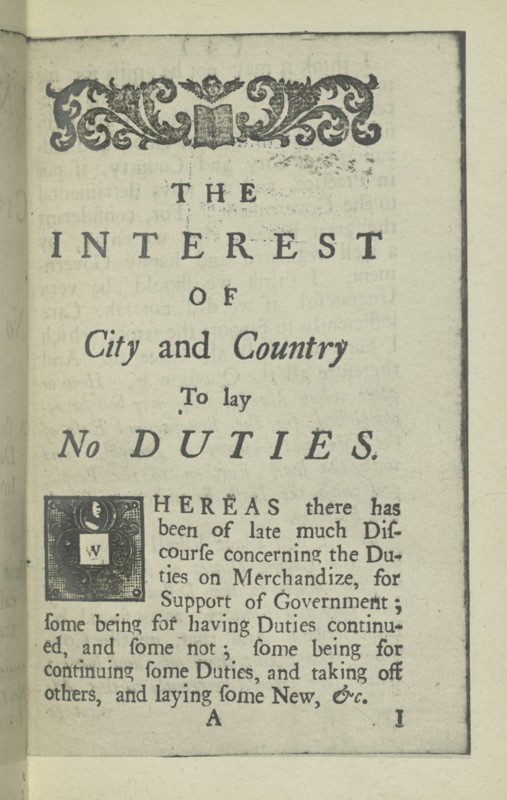
Detail of the opening page of chapter one of The Interest of City and Country to Lay No Duties (New York, 1726). (Courtesy, New York Public Library.)

High chest of drawers, Boston, Massachusetts, 1710–1720. White pine and maple with white pine. H. 61", W. 40 1/4", D. 22". (Chipstone Foundation; photo, Gavin Ashworth.)

Detail of the decoration on the upper case of the high chest illustrated in fig. 18. (Photo, Gavin Ashworth.)
